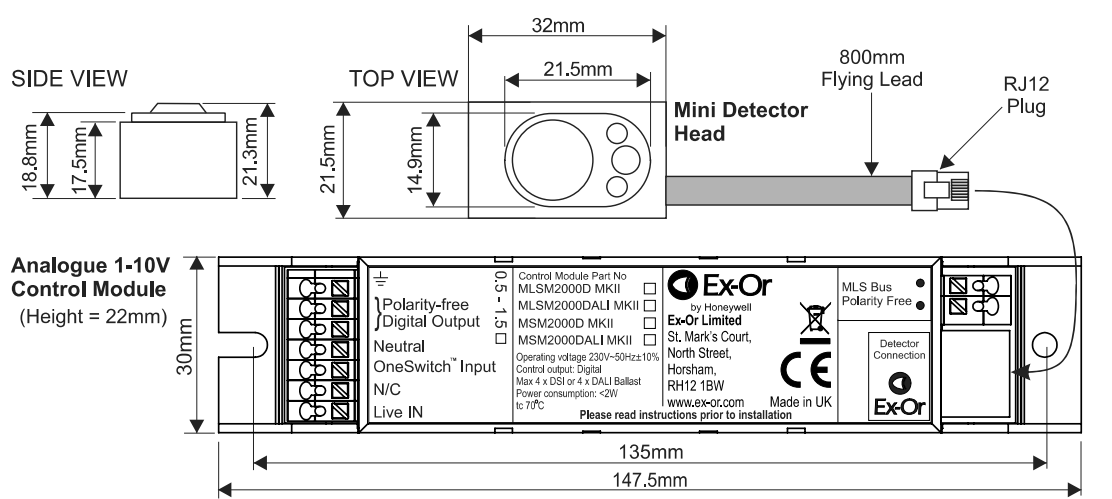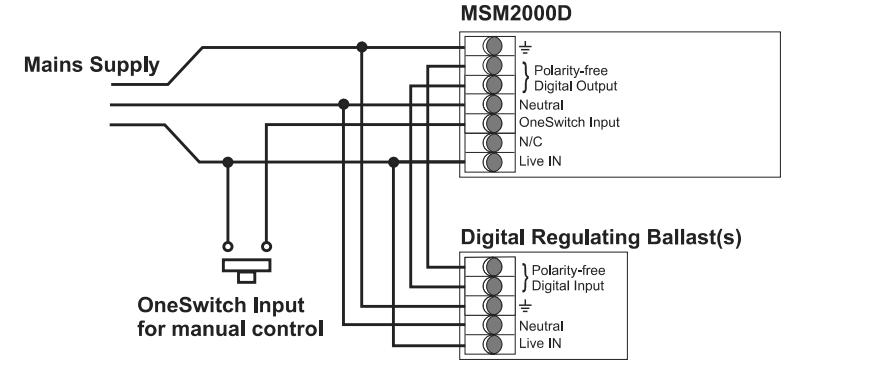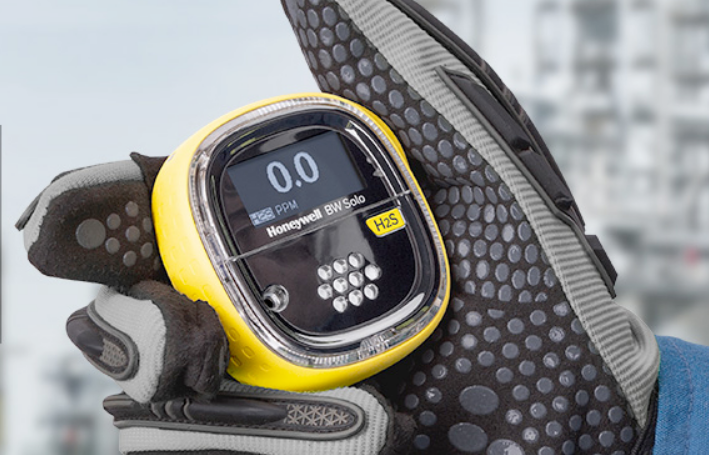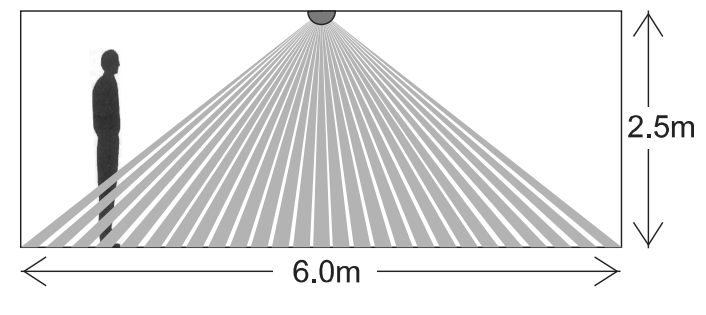
Honeywell W4267 DHS Mini Detector

Electrical Connections


Mounting Details
The MSM2000 Control Module is designed to be mounted within the luminaire on fixing centres of 135mm. Connections to the control module, as shown above, should be made using solid strand wire (0.5-1.5mm). The interconnect cable between the detector head and control module should be routed away from other luminaire internal wiring and away from the lamp end-caps.
The recommended position for the detector is in the middle of the luminaire. Where this is not possible and the detector is fitted near on end of the lamps, please ensure that the detector is at the ‘cold’ end of the lamps. The DHW/S Mini Detector Head should be mounted such that only the raised front section of the bezel protrudes through the cutout in the louvre or infill panel, constructed in accordance with the dimensions above.
Installation Guidelines
- The Mini Detector Head must be mounted within the luminaire. Do not mount remotely.
- The connecting cable must not be extended.
- Artificial light illuminating the Mini Detector Head must only be reflected from the room – i.e., there must be no direct illumination.
- In order to receive satisfactory light-level regulating operation, a detector must observe a substantially greater proportion of artificial light from the luminaire(s) under its control than from neighbouring luminaires not under its control. This is particularly important when planning the installed layout of linear luminaires that have an integral detector positioned at one end.
Commissioning
Detectors are supplied factory pre-set, which ensures the lighting will switch on automatically as soon as power is applied. Final commissioning of the detectors requires the use of an infrared Programmer. The QuickSet Pro gives access to the full range of parameters and options, but limited programming functions can also be carried out using an HP18.
Commissioning Detectors using the QuickSet Pro Programmer
It is important that the Programmer be held perpendicular between 0.5m and 2m from the sensor.
- Switch on by pressing any button (and unlock with the top left rectangular button).
- Point the programmer at the detector and press the DOWNLOAD button. The programmer will confirm the product’s identity and call up the correct menu of parameters and their current settings.
- Use a combination of UP, DOWN, FORWARD, and BACK buttons to navigate the parameter menu, selecting options for each shown.
- When options for all parameters have been selected, point the programmer at the detector and press the UPLOAD button. The luminaire(s) will switch off briefly during the programming process.
- After a short period of inactivity (default 5 minutes), the programmer hibernates, retaining the most recent settings.
OneSwitch Dimming
OneSwitch dimming affords local control to the end-user, whereby a simple, momentary, push-to-make wall switch can be used to raise or lower the lighting level or to toggle the output ON/OFF. A press of less than 1 second will toggle the output status, while a longer press will raise or lower the output. Each time the switch is pressed, the direction of dimming reverses. If the switch has not been pressed for 5 seconds, the direction will be up (brighter) – unless the output is already above 90% (dc 8V), in which case the direction is down.
To Test with Hand-held Controller
Once the LightSpot Luminaire Controllers have been installed within the luminaires, a Hand-held Controller or Programmer (HC5A or HP18) may be used to dim and brighten luminaires and to switch them ON and OFF. NB: See also ‘Important Additional Notes’ overleaf.
Technical Data
- MAXIMUM RECOMMENDED MOUNTING HEIGHT: 3.0m
- RANGE: Cone-shaped detection pattern, diameter (at floor level) = 2.4 x mounting height

- OPERATING VOLTAGE: 230V 50Hz (UK & Europe)
- ta = 0 – 50°C
- CAPACITY: Max 4 x DSI or DALI ballasts
- INTERCONNECT CABLE TEMPERATURE RATING: 60°C
- COLOUR: White (RAL9010) or silver bezel (DHW = White, DHS = Silver)
- MATERIAL: UV stabilised polycarbonate (DHW/DHS) Flame retardant PC/ABS (MSM2000D/DALI)
- IP RATING: 20
- DIMENSIONS: 32 (l) x 21 (w) x 18.6 (h) mm (DHW/DHS) 147 (l) x 30 (w) x 21 (h) mm (MSM2000D/DALI)
- WEIGHT: 32g incl. 0.8m cable (DHW/DHS) 48g (MSM2000D/DALI)
Important Additional Notes
- A means of disconnection must be incorporated in the fixed wiring in accordance with the current wiring regulations.
- Although nominally 12V, the dimming output is not SELV and therefore should be treated with the same respect as mains with regard to wiring practice. The 0V line of the dimming output is almost at Neutral potential,
- The dimming control output should be connected only to the control input of the ballasts, never to other detectors.
- This equipment should be used to control only those ballasts powered from the same phase as the detector.
- Due to the fact that the photocell on the ceiling is looking down, it is not possible for measurements to be made with a lux meter on the working plane. The reading remains constant when daylight illuminates the ceiling and the working plane to a differing extent. Therefore, products of this type should be regarded as capable of maintaining an APPROXIMATE light level only.
- This equipment switches lights no more frequently than would a responsible human occupant. However, manufacturers of some particular lighting types (e.g., “2D luminaires”) may specify a maximum number of switching cycles in order to achieve a predicted lamp life. Please check with the manufacturer of the luminaires to ensure that they are compatible with automatic controls in this respect.
- Some devices in this product range feature a silvered surface finish; this is intended for decorative purposes only. Care should be taken to avoid accidental separation of the silvered coating from the product. If the unit is built into a luminaire that is subsequently wrapped in film having adhesive properties, it is recommended that a layer of suitable packaging material be used to protect the silvered area.
Honeywell Ex-Or
St. Mark’s Court, North Street, Horsham, West Sussex, RH12 1BW, UK.
Tel: +44 (0)1942 719229
Email: [email protected]
www.ex-or.com
For More Manuals By Honeywell, Visit ManualsLibraryy.
Honeywell W4267 DHS Mini Detector-FAQs
What is this device for?
It is a safety switch for furnaces and boilers. It checks the air pressure inside your heating system. If the pressure is wrong, it safely shuts the system off to prevent damage.
How can I tell if it’s broken?
A common sign is your furnace trying to start but then shutting down after a few seconds without heating. You might also not hear a soft click from the switch when the system starts.
Can I install or replace this myself?
This part is a critical safety component. Installation involves both wiring and adjusting the pressure setting. For your safety, this work must be done by a qualified HVAC technician to ensure it is done correctly and your system operates safely.
Why won’t my furnace turn on? Is this the problem?
A faulty pressure switch is a common reason a furnace won’t run. However, it often fails because of another problem, like a blocked vent pipe or a dirty filter. A technician can determine if the switch itself is broken or if something else is causing it to trip.
What does the adjustable dial do?
The dial sets the specific pressure level that will activate the switch. It is factory-set for specific systems. This should only be adjusted by a technician with special tools to measure the pressure accurately. Turning it yourself can make your system unsafe.
How do I test it?
The safest way to test it is to have a technician use professional tools. Some manuals suggest a simple test by blowing gently into the tube to listen for a click, which indicates the mechanism is moving. However, this doesn’t confirm the pressure setting is correct.
Is it okay to bypass it just to see if that’s the problem?
No. You should never bypass this switch. It is a vital safety device. Bypassing it can lead to dangerous operation, potential carbon monoxide issues, or damage to your furnace.
Who should I contact for help?
If you suspect an issue with your furnace’s pressure switch or any other component, please contact a licensed and certified HVAC professional for diagnosis and repair.


